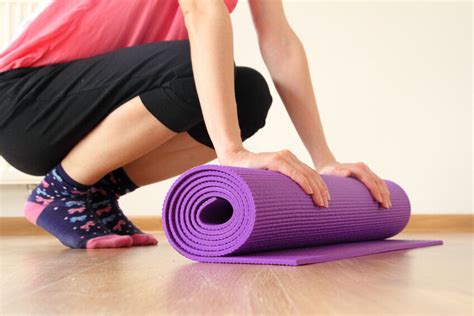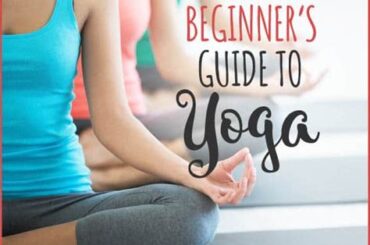Understanding Your Yoga Practice
Yoga is a practice that has been around for thousands of years and is becoming increasingly popular in modern society. It is a mind-body exercise that combines physical postures, breathing techniques, and meditation to promote overall well-being. The benefits of yoga are numerous, including improved flexibility, increased strength, reduced stress, and enhanced mental clarity.
When starting your yoga practice, it is important to understand that it is not just a physical workout, but a holistic approach to health and wellness. It is about connecting with your body, mind, and spirit to create harmony and balance. Each yoga pose, or asana, has a specific purpose and can target different parts of your body and mind. By understanding the purpose of each pose, you can deepen your practice and get the most out of each session.
One key aspect of understanding your yoga practice is recognizing that it is a journey, not a destination. It is not about achieving the perfect posture or being the most flexible person in the room. It is about self-discovery, self-acceptance, and self-growth. Every time you step onto your mat, you have the opportunity to learn something new about yourself, both physically and emotionally.
- Connecting with your breath: One of the fundamental principles of yoga is linking your breath with your movement. This rhythmic breathing not only helps you stay present during your practice but also enhances the flow of energy throughout your body. Take the time to notice your breath as you move through each pose, and use it as a tool to deepen your practice.
- Listening to your body: Every body is unique, and what works for one person may not work for another. It is essential to listen to your body and honor its limitations. Avoid comparing yourself to others in the class and focus on what feels good for you. If a pose doesn’t feel right, modify it or skip it altogether. Your practice should feel nourishing and empowering, not painful or forced.
- Cultivating mindfulness: Yoga is not just about the physical postures; it is also about cultivating mindfulness and being present in the moment. As you move through your practice, bring your attention to the sensations in your body, the thoughts in your mind, and the emotions in your heart. This awareness can help you find peace and stillness amid the chaos of everyday life.
| Pose | Purpose |
|---|---|
| Downward Facing Dog | Strengthens the upper body and stretches the back of the legs |
| Warrior II | Builds strength in the legs and improves balance and focus |
| Tree Pose | Enhances balance and concentration |
| Child’s Pose | Provides a gentle stretch for the back and promotes relaxation |
Understanding your yoga practice is a continuous process of exploration and self-reflection. As you develop a deeper understanding of your body, breath, and mind, you will find that your practice evolves and transforms. Embrace the journey, stay curious, and enjoy the transformative power of yoga.
Considering Your Body’s Needs
When it comes to practicing yoga, it is essential to consider your body’s unique needs. Each person is different, and what works for one individual may not work for another. By taking the time to understand and honor your body, you can tailor your yoga practice to suit your specific needs and limitations.
Firstly, it is important to listen to your body. Pay attention to how your body feels during and after each yoga session. If something doesn’t feel right or causes pain, it is crucial to modify or avoid that particular pose. Remember, yoga is about finding balance and harmony within yourself, so pushing past your limits can do more harm than good.
Secondly, adapt your practice based on your body’s abilities and limitations. If you have a history of back pain, for example, you can modify poses to protect your spine by using props such as blocks or straps. Similarly, if you have joint issues, opting for gentler variations of poses can help alleviate any discomfort.
Finally, choose the right style of yoga that aligns with your body’s needs. There are various styles of yoga, each with its own focus and intensity level. For example, if you’re looking for a more gentle and restorative practice, you might opt for yin or hatha yoga. On the other hand, if you’re seeking a more dynamic and challenging experience, vinyasa or power yoga may be more suitable.
- Listen to your body
- Adapt your practice
- Choose the right style of yoga
By considering your body’s specific needs, you can create a yoga practice that promotes overall well-being and prevents injury. Remember, the journey of yoga is highly personal, and it’s crucial to find what works best for you. So, embrace the uniqueness of your body and let yoga be a tool for self-discovery and self-care.
| Benefits | Considerations |
|---|---|
| Improved flexibility | – Modify poses for any existing injuries or limitations |
| Increased strength | – Listen to your body’s limits and avoid overexertion |
| Enhanced mind-body connection | – Choose a yoga style that allows you to focus on your breath and movement |
Evaluating Material and Thickness
When it comes to choosing a yoga mat, one of the most important factors to consider is the material and thickness. The material of your mat plays a significant role in determining its durability, grip, and overall comfort. Additionally, the thickness of the mat can affect your balance and joint support during your yoga practice. Therefore, it is crucial to evaluate the material and thickness of the mat before making a purchase.
First and foremost, let’s discuss the different materials commonly used for yoga mats. One popular option is rubber, which provides excellent grip and traction. Rubber mats are also known for their durability, making them a long-lasting investment. Another common material is PVC, which is known for its affordability and easy maintenance. However, it is worth noting that PVC mats may not be as eco-friendly as other options. If sustainability is a concern for you, natural fibers such as jute, cork, or organic cotton might be the way to go.
Now, let’s shift our focus to the thickness of the mat. The thickness of a yoga mat can range from as thin as 1/16 inch to as thick as 1/4 inch. The choice of thickness depends on your personal preferences and needs. Thicker mats provide more cushioning and support, making them ideal for individuals with joint issues or those who prefer a softer surface. On the other hand, thinner mats offer a firmer and more stable base, making them suitable for practitioners who prioritize balance and stability.
- Consider your body’s needs and level of comfort when choosing the thickness of your mat.
- If you have sensitive knees or wrists, opt for a thicker mat to provide extra cushioning and support.
- For a more challenging practice that involves balancing postures, a thinner mat can offer a greater sense of stability.
| Material | Pros | Cons |
|---|---|---|
| Rubber | Excellent grip and traction, durable | May have a rubber smell, more expensive |
| PVC | Affordable, easy to clean | Not environmentally friendly |
| Natural fibers | Eco-friendly, sustainable options | May not provide as much grip |
Overall, when evaluating the material and thickness of a yoga mat, it’s important to consider factors such as durability, grip, comfort, and sustainability. Take into account your body’s needs and personal preferences to make an informed decision. Whether you opt for a rubber mat, PVC mat, or natural fiber mat, choose the one that best suits your yoga practice and aligns with your values.
Eco-Friendly and Sustainable Options
When it comes to yoga, not only is it important to nurture our bodies and minds, but also to consider the impact on the environment. With a growing awareness of the need for sustainable living, many yogis are seeking eco-friendly options for their practice. From mats to props and accessories, there are several conscious choices you can make to reduce your carbon footprint and contribute to a greener planet.
First and foremost, let’s talk about yoga mats. Traditional mats are often made from synthetic materials like PVC, which release harmful toxins into the environment during production and disposal. However, there are now various eco-friendly alternatives available. Natural rubber mats, for example, are not only biodegradable but also provide excellent grip and cushioning. Another option is mats made from cork, which is a renewable and sustainable material. These mats offer a natural antimicrobial property, keeping them clean and hygienic without the need for chemicals.
Aside from mats, you can also consider sustainable options for your yoga props and accessories. For instance, instead of using foam blocks, which are made from non-renewable resources, you can opt for blocks made from bamboo or recycled materials. These alternatives are not only more eco-friendly but also offer durability and stability during your practice. Similarly, you can choose straps made from organic cotton or hemp, which are biodegradable and sustainable.
Furthermore, it’s important to think about the overall production process and the brand’s commitment to sustainability before purchasing any yoga product. Look for companies that prioritize eco-friendly practices, such as using sustainable packaging materials or offsetting their carbon emissions. Many brands now proudly display certifications like Fair Trade, Organic, or Carbon Neutral, which can help you make an informed choice.
- Choose mats made from natural rubber or cork for a more eco-friendly practice.
- Consider using props made from renewable materials like bamboo or recycled materials.
- Look for brands that prioritize sustainability and display relevant certifications.
| Eco-Friendly Yoga Products | Benefits |
|---|---|
| Natural rubber mat | Biodegradable, excellent grip, cushioning |
| Cork mat | Renewable, antimicrobial, natural grip |
| Bamboo blocks | Eco-friendly, durable, stable |
| Recycled foam blocks | Sustainable, supportive, versatile |
| Organic cotton or hemp straps | Biodegradable, sustainable, comfortable |
In conclusion, making sustainable choices in your yoga practice is not only beneficial for the environment but also enhances your overall well-being. By selecting eco-friendly mats, props, and accessories made from renewable materials and supporting conscious brands, you can contribute to a greener planet while enjoying your yoga journey. Let’s strive for a harmonious balance between our practice and the world we live in!
Finding the Perfect Grip
When it comes to yoga, finding the perfect grip can make a world of difference in your practice. It is essential to have a stable and secure grip to maintain stability in your poses and prevent slipping or sliding. The right grip will not only enhance your performance but also provide you with the confidence needed to explore more challenging asanas. Here are some tips to help you find the perfect grip for your yoga practice.
1. Consider Your Mat: The surface you practice on plays a crucial role in your grip. The texture and stickiness of your yoga mat can greatly affect how well you can hold your poses. Opt for a mat that has a non-slip surface, providing sufficient traction to prevent your hands and feet from sliding. Additionally, make sure your mat is thick enough to cushion your joints and provide comfort during your practice.
2. Use Props: Props such as yoga blocks and straps can be beneficial in enhancing your grip. If you struggle with certain poses or have limited flexibility, props can assist you in maintaining stability and proper alignment. For example, using blocks under your hands in standing poses can provide extra support and allow you to focus on your grip. Straps can also help in achieving a more secure grip while stretching and deepening your stretches.
3. Explore Different Materials: Yoga mats come in a variety of materials, each with its unique characteristics. Experimenting with different materials can help you find the perfect grip for your practice. Some mats are made of natural rubber, which offers excellent grip and durability. Others are made of PVC or polyurethane, providing a softer and cushioned surface. Consider your preferences and needs when selecting a mat material that feels comfortable and secure for your hands and feet.
Having a strong and reliable grip in your yoga practice not only improves your overall performance but also promotes safety and stability. By considering factors such as your mat, props, and materials, you can find the perfect grip that supports and enhances your practice. Remember, finding the right grip may require some trial and error, so don’t be afraid to explore different options until you find what works best for you. Happy practicing!
Frequently Asked Questions
Q: How can I understand my yoga practice?
A: Understanding your yoga practice involves staying present in the moment, listening to your body’s signals, and being aware of your breath and alignment. It is about developing a sense of mindfulness and finding the right balance between effort and ease.
Q: What factors should I consider to meet my body’s needs during yoga?
A: When considering your body’s needs during yoga, it is important to take into account your flexibility, strength, and any physical limitations or injuries. You should also consider your energy level, personal goals, and any specific areas of focus or concern you may have.
Q: How do I evaluate the material and thickness of a yoga mat?
A: When evaluating the material and thickness of a yoga mat, consider factors such as durability, comfort, grip, and environmental impact. Look for mats made from non-toxic materials like natural rubber or eco-friendly options. Thickness is a personal preference, but generally, thicker mats provide more cushioning and support.
Q: Are there eco-friendly and sustainable options for yoga mats?
A: Yes, there are eco-friendly and sustainable options for yoga mats. Look for mats made from natural and biodegradable materials like natural rubber, cork, or jute. These materials are renewable, non-toxic, and have a lower environmental impact compared to synthetic mats.
Q: What should I consider when looking for the perfect grip on a yoga mat?
A: When looking for the perfect grip on a yoga mat, consider the texture, material, and surface of the mat. Mats with a non-slip texture or a natural rubber base often provide better grip. It is also important to clean your mat regularly to maintain its grip.
Q: How can I ensure that my yoga mat is eco-friendly and sustainable?
A: To ensure that your yoga mat is eco-friendly and sustainable, look for certifications such as the Global Organic Textile Standard (GOTS) or the OEKO-TEX Standard 100. These certifications guarantee that the mat is made from non-toxic and environmentally friendly materials.
Q: What are some tips for finding the right yoga mat that meets my needs?
A: When looking for the right yoga mat, try out different mats to find the one that suits your practice and body needs. Consider your preferred thickness, grip, material, portability, and durability. Reading reviews and seeking recommendations from experienced yogis can also be helpful in finding the perfect fit.





